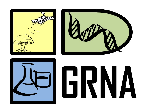Banca de DEFESA: ALLINE DA SILVA RUFINO
Uma banca de DEFESA de MESTRADO foi cadastrada pelo programa.DISCENTE : ALLINE DA SILVA RUFINO
DATA : 18/02/2020
HORA: 08:30
LOCAL: Sala 107 - Campus Amazônia
TÍTULO:
MOLECULAR DIVERSITY AND TAXONOMIC STATUS OF Pimelodus blochii (Valenciennes, 1840) (SILURIFORMES, PIMELODIDAE) OF THE TAPAJÓS AND LOW AMAZONAS RIVER
PALAVRAS-CHAVES:
Barcoding DNA. Pimelodus. Genetic variation.
PÁGINAS: 55
GRANDE ÁREA: Outra
ÁREA: Ciências Ambientais
RESUMO:
The genus Pimelodus is widely distributed in South American rivers and its taxonomy is confusing. The following species of the genus occur in the Amazon basin: P. blochii, P. albofasciatus, P. microstoma, P. jivaro, P. ornatus, P. tetramerus, P. altissimus and P. pictus, which present a slight morphological variation. This variation can hinder the taxonomic classification of the group. P. blochii occurs in large territory of the Amazon basin, where it exhibits remarkable morphological variation in aspects of body coloration. Morphometric and cytogenetic data suggest that this taxon may represent a complex of cryptic species. In the present work we aimed to investigate the molecular genetic diversity of Pimelodus blochii of the Tapajós River and Lower Amazon and the phylogenetic relationships in the genus Pimelodus. Part of the mitochondrial gene Cytochrome Oxidase Subunit I (COI), a region known as DNA barcoding, was used as a genetic marker and three species delimitation methods were applied (BIN, ABGD and GMYC). A total of 97 barcode sequences were obtained from samples collected in the lower portions of the Amazon, Tapajós and Trombetas rivers. Additional sequences of correlated taxa were obtained from public repositories on the internet. A total of 239 sequences were evaluated, resulting in the formation of 19 species by the ABGD and GMYC approaches and 20 species by the BIN approach. The delimitation analyzes of applied species were congruent for most species, except for P. blochii, P. maculatus and P. ornatos. For P. blochii the analyzes detected from two to three different species. Samples belonging to this study from the lower Amazon region do not form only one kind of species in any of the applied methodologies. Therefore it is possible to have species hidden under the same identification co-inhabiting the Amazon basin.
MEMBROS DA BANCA:
Externo ao Programa - 1961826 - FRANK RAYNNER VASCONCELOS RIBEIRO
Interno - 1987988 - GABRIEL IKETANI COELHO
Externa ao Programa - 2383596 - HELOISA DO NASCIMENTO DE MOURA MENESES
Presidente - 1327077 - LUIS REGINALDO RIBEIRO RODRIGUES




